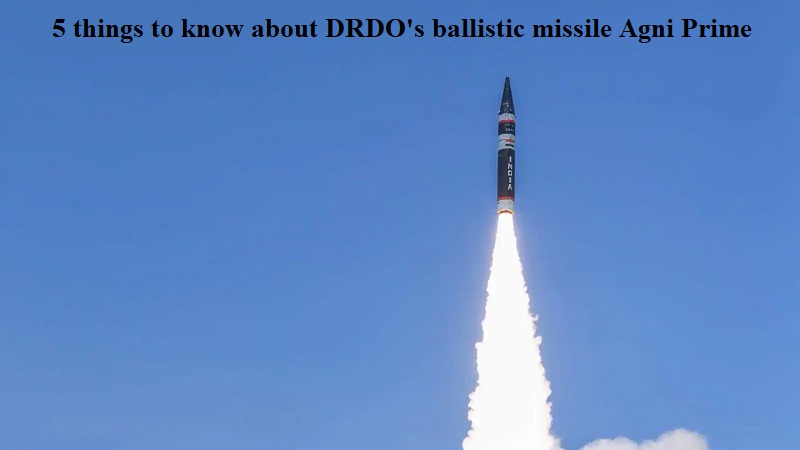
The Defence Research and Development Organisation (DRDO) successfully conducted the flight test of Agni Prime, a new-generation ballistic missile with nuclear capabilities, on Wednesday. The test took place from Dr APJ Abdul Kalam Island off the coast of Odisha on the night of June 7. Agni Prime has been developed as a successor to the Agni-I and Agni-II missiles that are currently in operational service.
The recent test marked the first pre-induction night launch conducted by the users after three successful developmental trials, confirming the system’s accuracy and reliability. To capture flight data throughout the missile’s trajectory, various Range Instrumentation systems, including Radar, Telemetry, and Electro-Optical Tracking Systems, were deployed at different locations, including two down-range ships, at the terminal point, as stated in a Defence Ministry statement.
The Agni missile belongs to a family of medium to intercontinental-range ballistic missiles named after the element of fire. The first missile in the Agni series, Agni-I, was developed and tested in 1989 under the Integrated Guided Missile Development Programme (IGDMP). Since then, multiple versions of the missile have been developed, culminating in Agni-V, an Intercontinental Ballistic Missile (ICBM). Agni-VI, another ICBM with a range of 11,000-12,000 kilometers, is currently under development. Agni Prime (Agni-P) is another missile in this series.
The development of Agni Prime began in 2016, when reports emerged that DRDO was working on a successor to Agni-I called Agni-1P, incorporating technologies from Agni-IV and Agni-V.
Here are five key facts about the Agni Prime new-generation ballistic missile:
- Agni Prime is a two-stage canistered solid propellant ballistic missile equipped with dual redundant navigation and guidance systems.
- It underwent initial testing in June 2021 and has a range of 1000 to 2000 kilometers. Compared to previous Agni series missiles, it is lighter in weight.
- This recent launch, conducted at night, marked the first pre-induction launch by the users following three successful developmental trials, confirming the system’s accuracy and reliability.
- To gather comprehensive flight data, Range Instrumentation systems such as Radar, Telemetry, and Electro-Optical Tracking Systems were deployed at various locations, including two down-range ships positioned at the terminal point.
- The successful flight test has paved the way for the induction of the Agni Prime system into the Armed Forces.

Post Your Comments